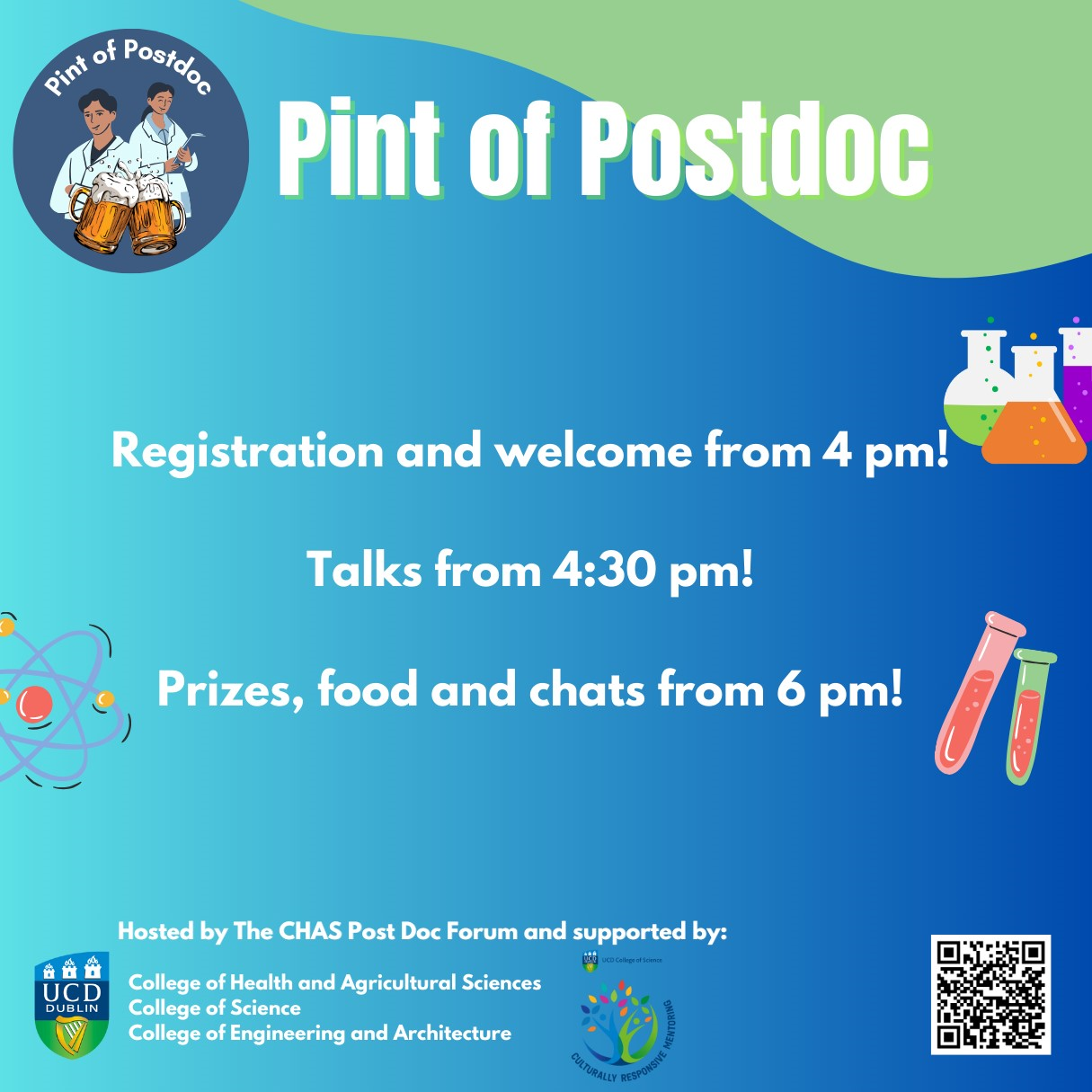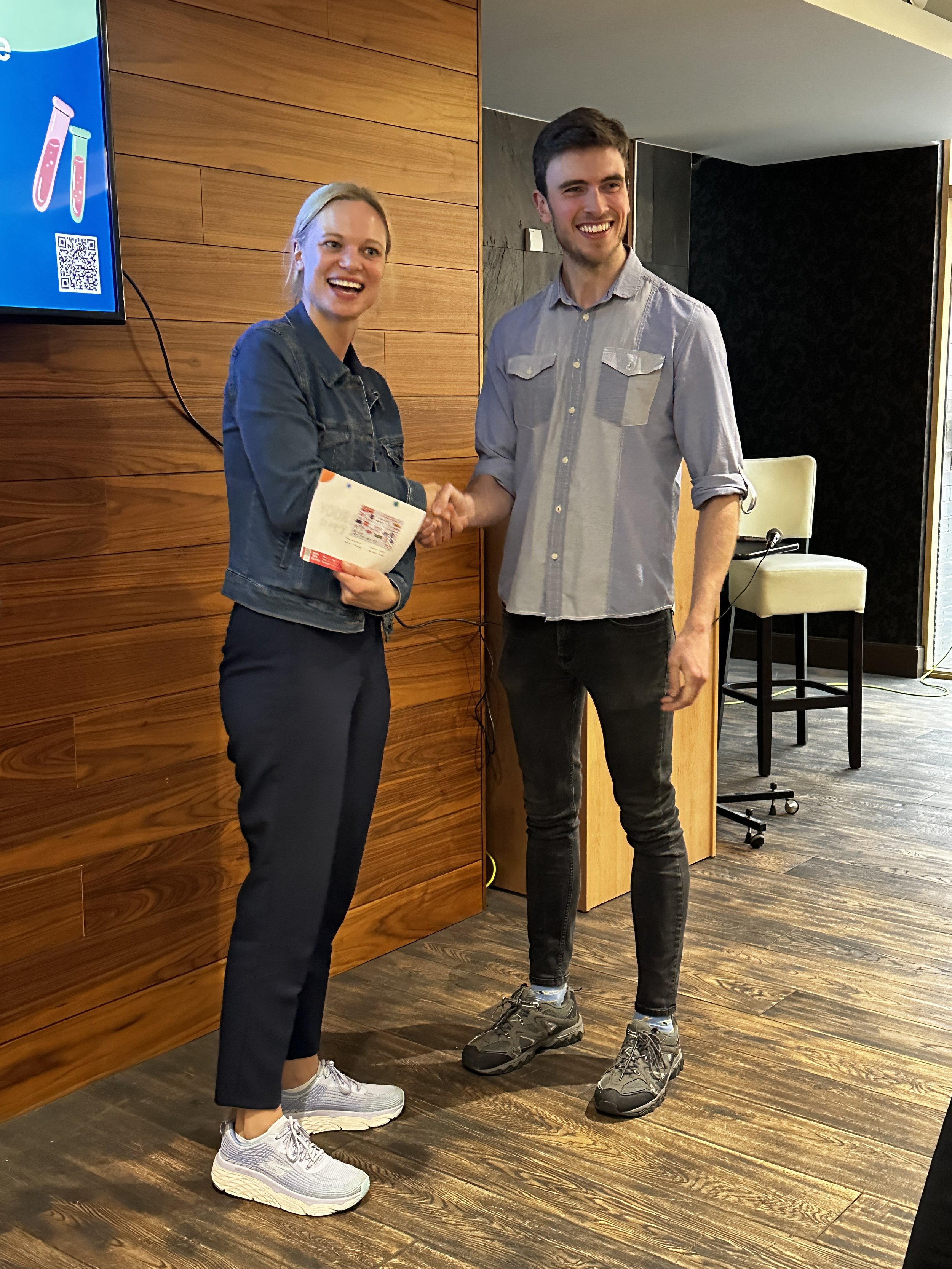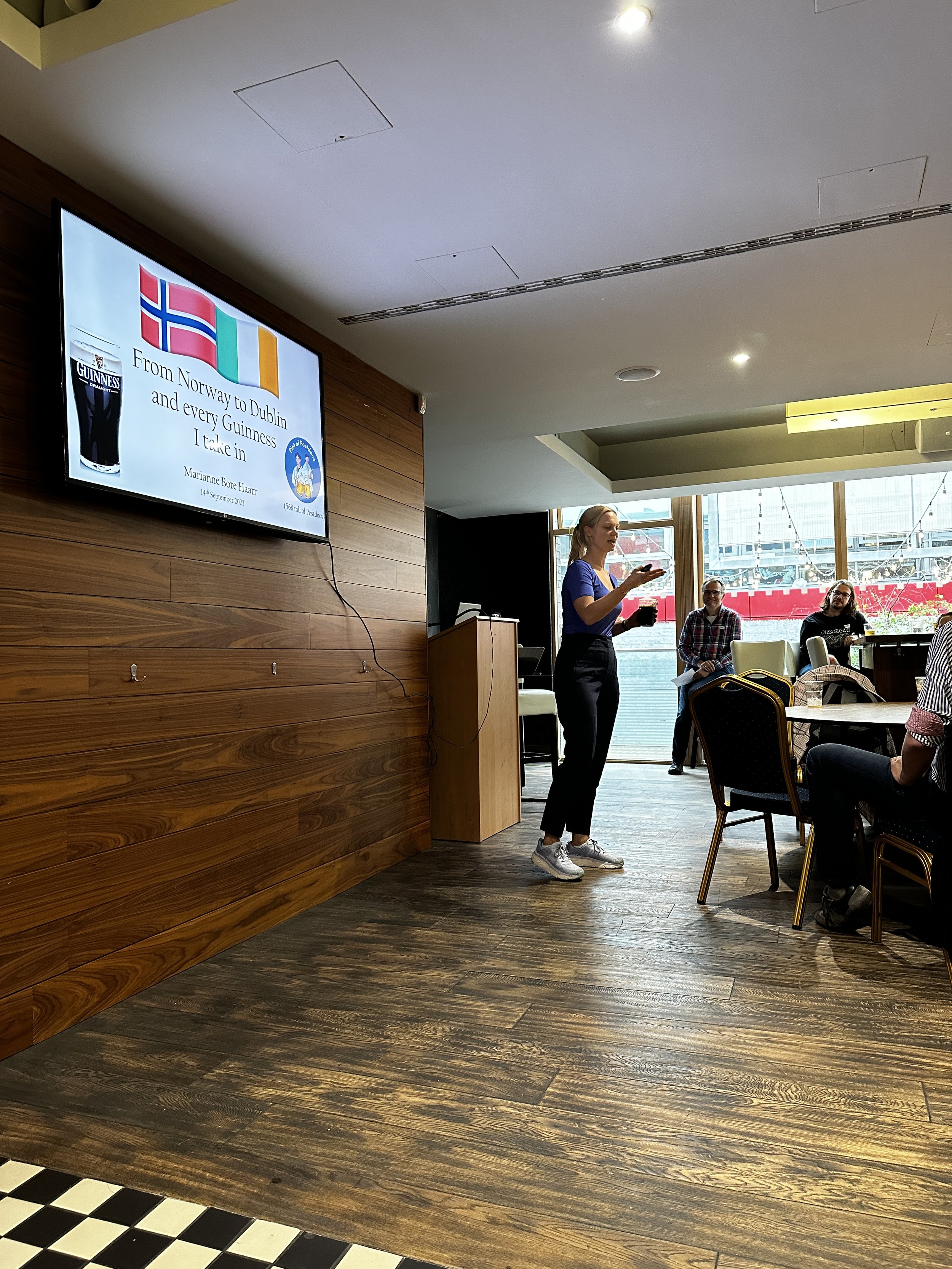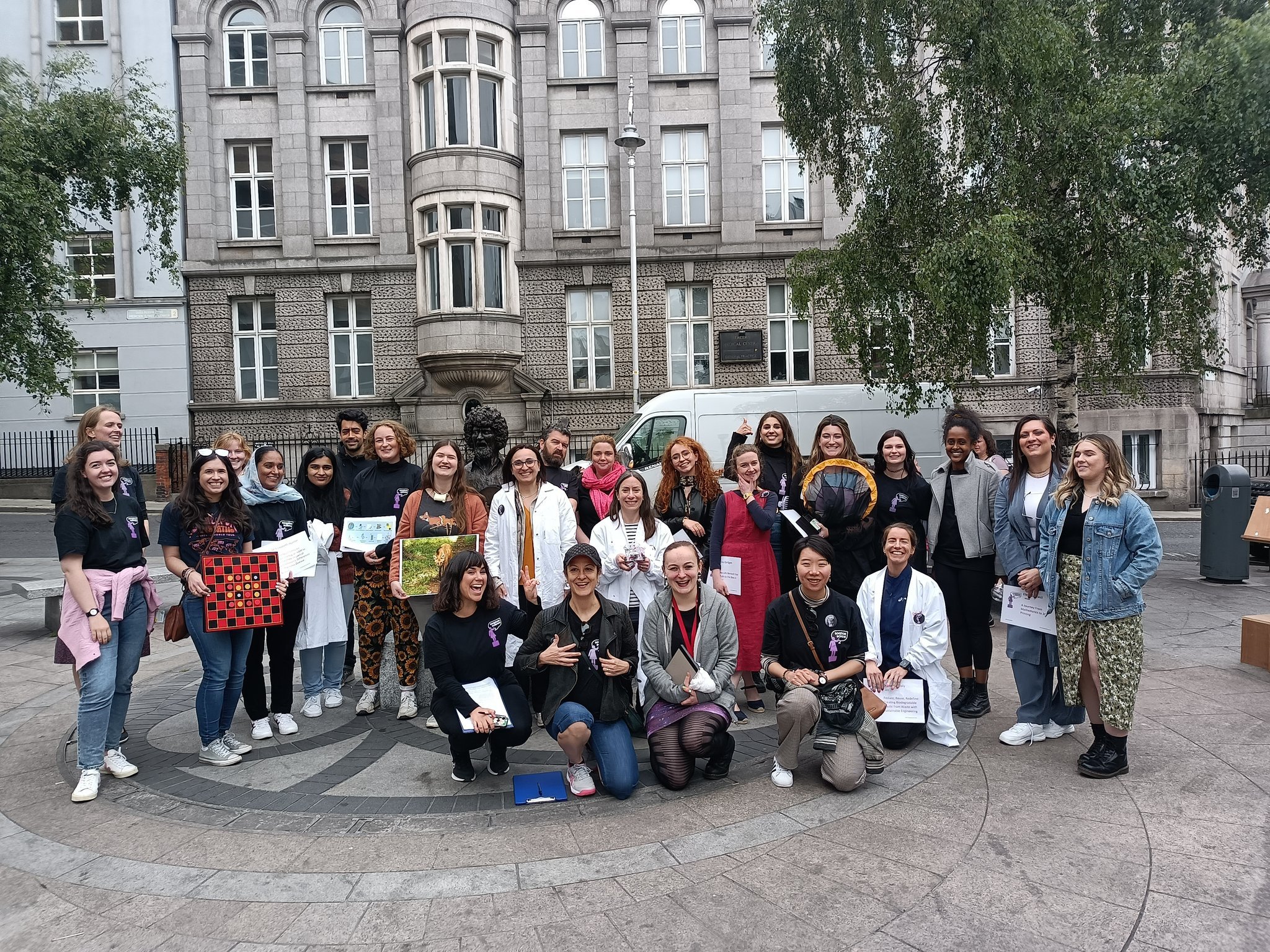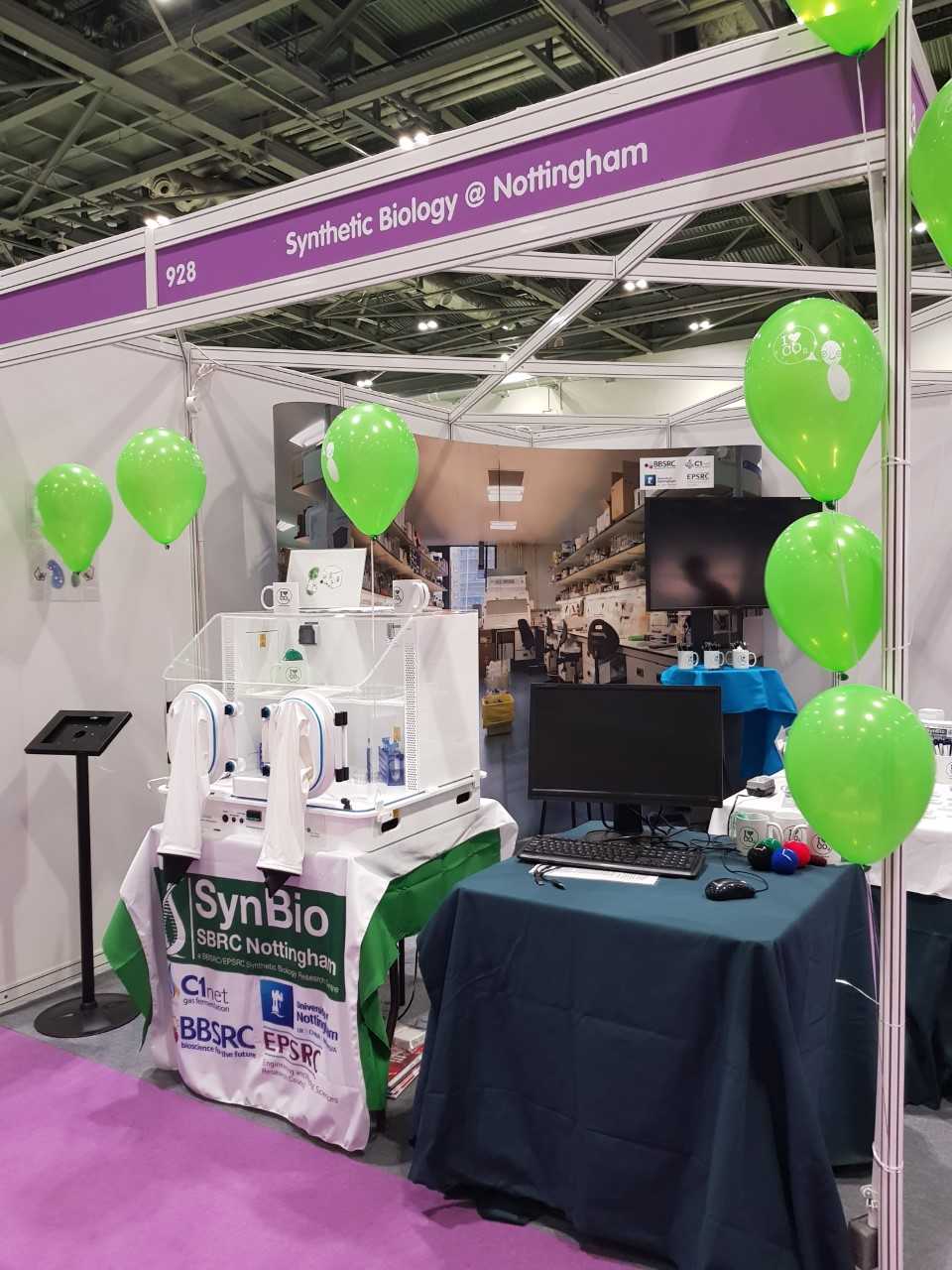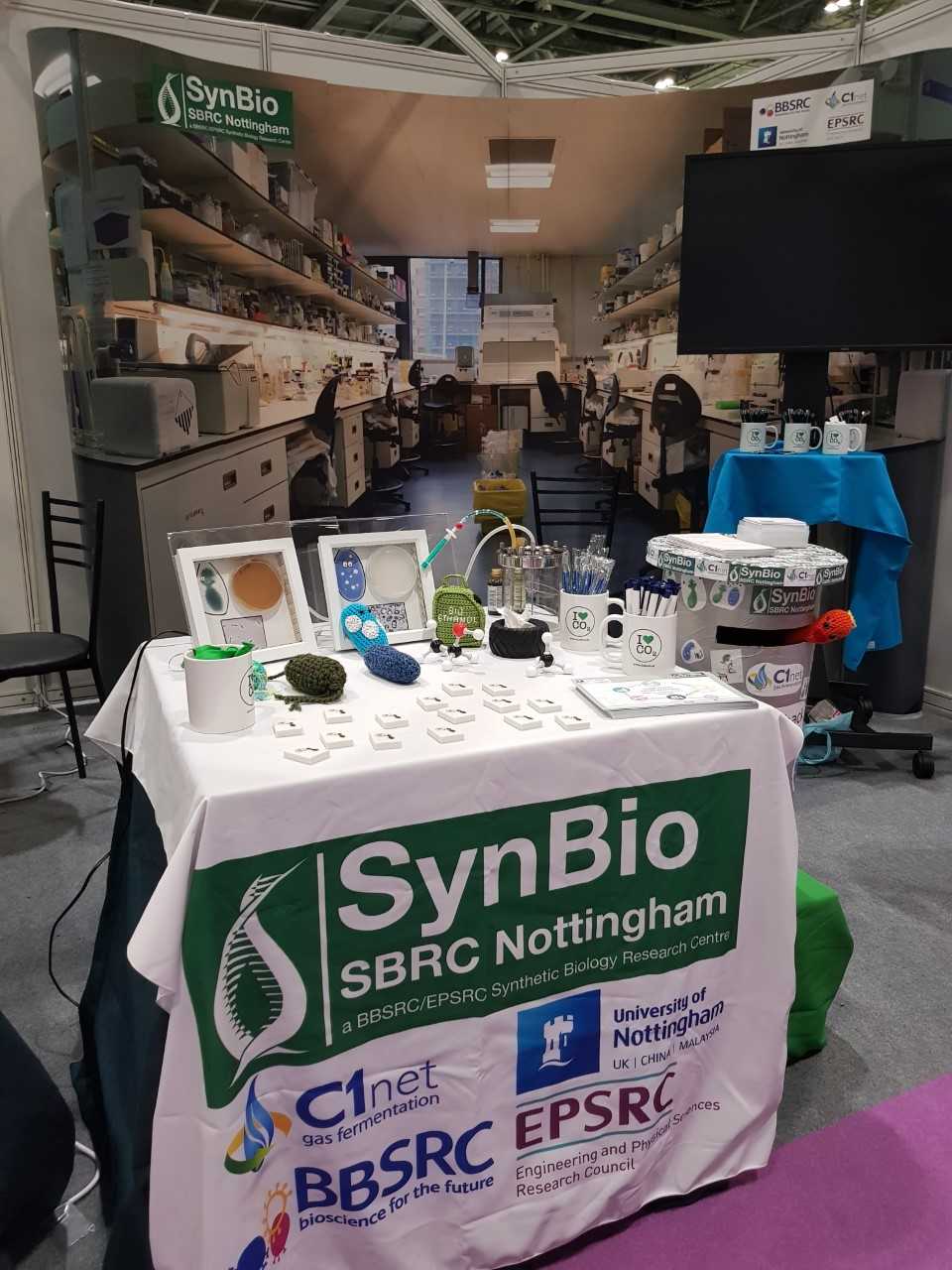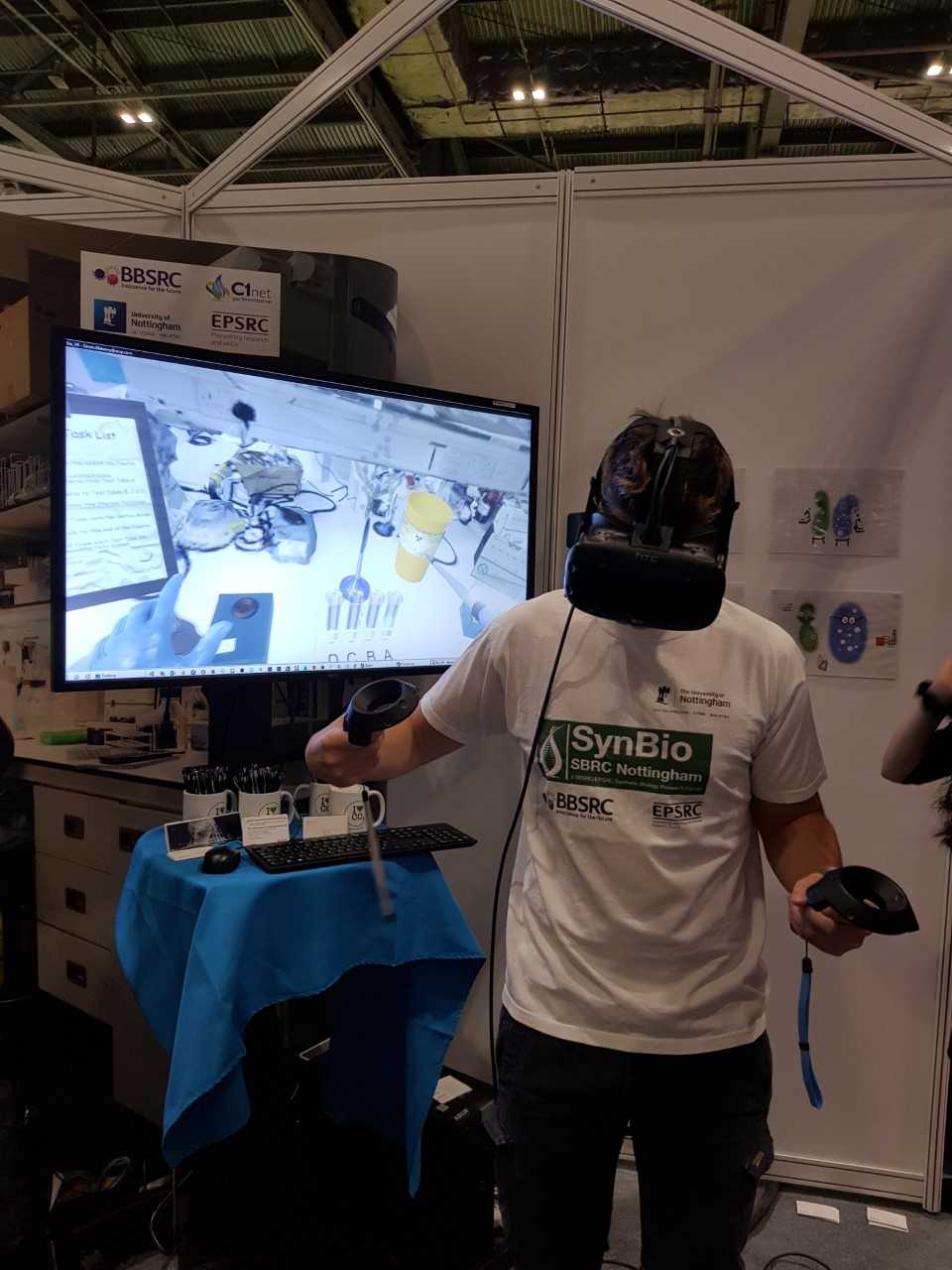OUTREACH ACTIVITIES
We are very grateful for the research support we receive and are keen to share our science, activities and experiences with the public. We hope you find them interesting!
Summer Student Placements: The O’Reilly Group were delighted to welcome three enthusiastic summer students to our lab in June: Anastasiia, Marcin and Trevor! Throughout their placement, they immersed themselves in a range of chemical biology techniques, gaining valuable hands-on experience and contributing to our research projects. They learnt how to transform a plasmid, express a protein and carry out SDS-PAGE analysis. The expressed enzymes were then used to catalyse useful biotransformations. We also held a Petri Dish Art Competition – using bacteria to create art!
Thank you, Anastasiia, Marcin and Trevor for being a part of our team this summer. We wish you all well in your future careers!
Pint of Postdoc: Congrats to Marianne who won first prize in Pint of Postdoc with the talk “From Norway to Dublin and every Guinness I take in”. The event was organised by the ‘pint of postdoc’ committee consisting of postdocs from the College of Science, the College of Health and Agriculture, and the College of Engineering and Architecture, UCD. Well done Marianne!!
Soapbox Science: Well done to Aoife on taking part in this years Soapbox Science Ireland event! Aoife took to the streets of Dublin to talk about how great enzymes are at doing chemistry and how they affect our everyday lives.
UCD Festival 2022: Adam and Kathryn were some of the volunteers who represented the School of Chemistry at the annual UCD Festival this year. The stall demonstrated kitchen chemistry with the likes of non-Newtonian fluids, Berocca volcanoes and dry ice bubbles!
Pint of Science: Well done to our PhD student Adam and the PoS team for organising the Pint of Science event – “Understanding our Brain”, in Chaplain’s bar. The audience were treated to a not-so typical evening in the pub listening to flash talks by speakers who engaged them with fascinating research topics and live music. Slainte!
Ms Emily Johnston - Transition Year Work Placement student May 2021
Transition Year Work Experience May 2021: The O’Reilly research group were delighted to virtually host Emily for her TY work experience. Here are a few words from Emily about what she got up to….
Hi, I’m Emily. I’m in Transition year(TY) this year. As you can imagine we have not had much opportunity to do many of the usual TY activities because of COVID. Thankfully I was so lucky to get a placement with Dr. Elaine O’Reilly in the School of Chemistry UCD. Originally it was organised for me to work in the labs, however that was not meant to be.
Elaine provided me with a few great research topics of particular interest to the O’Reilly Research group. The topic that stood out the most to me was the role the research group website plays in how students evaluate and select which Chemistry research groups to join. With this in mind I wanted to look at possible influencing factors, such as the director’s gender, website appearance and content.
I started with a basic website analysis of the main features of the research group websites from the prominent Chemistry Universities in Ireland. While most were clearly providing exciting, engaging and detailed content there were a few that appeared to only provide the bare minimum. Given these two distinct approaches I began to think of how I wanted to conduct this research. From previous experience I knew that conjoint analysis is very effective in understanding the factors that come in to play in a person's decision making.
I used EPIC Conjoint’s survey software to develop my own survey which would be sent out to students. The study analysed 9 different research groups measuring the students interest in each group based on 6 features including group director and the website homepage. Results pending.
Although I didn’t get to work on campus, I thoroughly enjoyed the experience. In particular the interaction with Dr. Elaine O’Reilly. As a TY student it was a great opportunity to develop my research and analysing data skills and enrich my insight into the life of a Chemistry PHD student. I’m very grateful to Dr. O’Reilly for all her time and guidance this week and for opening up the world of chemistry to me.
The New Scientist Live! is a science public engagement event, which took place in Excel during September 2018 and showcases the ongoing research innovation in the UK. It attracts people of all ages and from various backgrounds, who are either interested in science or just a bit curious. The participants of this event come from a diverse range of fields, including physics, chemistry, biology, and engineering and they have the opportunity to inspire new generations, address concerns and most importantly inform their peers!
Stelios was at the SBSRC Nottingham stand, where a variety of activities took place. Attractions included a computer model of a biochemical pathway, an anaerobic cabinet, microscope drawing of some bacteria and some examples of potential products as well as a VR for a hands on experience in the lab.
Check out Nature Chemistry's blog 'theScepticalChymist' for an interview with Elaine http://blogs.nature.com/thescepticalchymist/2017/03/reactions-elaine-oreilly.html
THE GROUP HELPING AT SCIENCEINTHEPARK2017 http://nottsbsa.org/articles/fantastic-science-park/
International Women's Day
It’s International Women’s Day! One outstanding female scientist is Tu Youyou, a Chinese chemist who won a Nobel Prize in 2015 for her discovery of artemisinin, which is now one of the most important drugs in our arsenal against malaria.
Artemisinin was discovered by Tu Youyou’s group against the backdrop of the proxy war against the USA in Vietnam, where malaria was an enormous problem for both sides since it incapacitated a significant proportion of troops [1]. To find a solution, the Chinese turned to their well-documented heritage of traditional medicines. They methodically tested different herbs that were used against malaria and found that extracts from Artemisia annua displayed exceptional antimalarial activity. [2]
The active component was isolated and in 1975 its chemical structure was elucidated. Later, chemists developed similar drugs, some of which were even more potent, by making small alterations to the structure of artemisinin.
One problem shared by many plant-derived drugs is variability in the content of the active compound. It is possible to breed varieties that produce larger
amounts of artemisinin, but changes in environmental factors such as temperature, nutrient availability, time of harvest etc. can still cause variations in artemisinin levels [3]. To avoid gambling the supply of artemisinin on the vagaries of Nature, several other approaches for the production of artemisinin-type drugs have been devised.
One approach is “total synthesis” i.e. production of the drug from scratch using the methods of organic chemistry. However, since artemisinin is quite a complex molecule it is difficult to design a process which is efficient enough to compete with simply growing the plant. [4]
There’s an alternative approach to the production of artemisinin which uses biocatalysis - the same type of thing we do in the O’Reilly Group. This route obviates the need to grow the plant at all. The genes responsible for production of artemisinin are instead inserted into baker’s yeast, which is easily grown on a large scale to produce the drug at very low cost. [5]
Image credits:
Artemisia annua: Picture by Andrea Moro - Creative Commons Attribution Non Commercial Share-Alike 3.0 License
References:
1. Beadle, C. and Hoffman, S.L., 1993. History of Malaria in the United States Naval Forces at War: World War I Through the Vietnam Conflict. Clinical Infectious Diseases, 16 (2), pp.320–329. Available at: http://cid.oxfordjournals.org/content/16/2/320.abstract
2. Hsu, E., 2006. Reflections on the “discovery” of the antimalarial qinghao. British Journal of Clinical Pharmacology, 61(6), pp.666–670. Available at: http://www.ncbi.nlm.nih.gov/pmc/articles/PMC1885105/
3. Delabays, N., Darbellay, C. and Galland, N., 2002. Variation and Heritability of Artemisinin Content in Artemisia annua L. In: C. Wright, ed., Artemisia, 1st ed. London: Taylor & Francis, pp.197-210.
4. Wang, Z., Yang, L., Yang, X. and Zhang, X., 2014. Advances in the Chemical Synthesis of Artemisinin. Synthetic Communications, 44(14), pp.1987–2003. Available at: http://www.tandfonline.com/…/a…/10.1080/00397911.2014.884225
5. Paddon et al., 2013. High-level semi-synthetic production of the potent antimalarial artemisinin. Nature, 496(7446), pp.528–532. Available at: http://www.nature.com/…/jo…/v496/n7446/full/nature12051.html




